Menu
Species: refers to one of the five or six irises found in nature that breed true and are commonly accepted by taxonomists and botanists. They are Iris hexagona, I. fulva, I. brevicaulis, I. giganticaerulea, I. nelsonii; some add I. savannarum.
Hybrid: A hybrid is an iris created when two species or their hybrid descendants are are cross-pollinated by humans or naturally.
Cultivar: A cultivar is a plant, often a hybrid, that is selected and cultivated for desirable traits and often sold. “Cultivar” is shortened from “cultivated variety.”
Today’s garden Louisiana irises are not many generations removed from their wild ancestors, but the differences in appearance and other characteristics can be striking. The earliest hybrids on record were created in the early 1900s, followed by sporadic work until the 1940s and 1950s, after which an emphasis on formal hybridization resulted in a remarkable transformation of the irises in a relatively short time.
Hybrid ‘Dorothea K. Williamson’
The earliest known hybrids were close to the native species and were created by simply crossing one species with another. William Rickatson Dykes, the amateur English botanist who developed the first classification system for irises in 1913, crossed I. fulva with I. brevicaulis (then called I. foliosa) to produce ‘Fulvala’. Another English botanist, E. B. Williamson, used the same two species as parents to create ‘Dorothea K. Williamson’ in 1918. Amazingly, this iris is still grown today.
In the 1930s, Thomas A. Washington of Nashville, a prolific hybridizer of bearded irises, created over 50 Louisiana iris cultivars. Parentage records are incomplete, but it appears that Washington worked with I. fulva, the East Coast species I. hexagona, and an occasional first-generation hybrid. Also before 1940, J. C. Nicholls, Jr. of Camillus, New York, registered over 20 Louisiana irises, offered for sale by the Royal Iris Garden, but these appear to have been plants collected in Louisiana, either species or natural hybrids. And Percy Viosca in New Orleans is credited with 15 named hybrids in this period, but there is no record of their ancestry, whether from collection or intentional crosses.
Hybridizing work before 1940 was similar in two respects. First, it did not develop the resulting plants much beyond the species, and second, although ahead of its times, it did not feed into the lines of modern hybrids we see today. Despite interesting and forward-looking work, these efforts appear to have been dead ends.
The earliest known hybrids were close to the native species and were created by simply crossing one species with another. William Rickatson Dykes, the amateur English botanist who developed the first classification system for irises in 1913, crossed I. fulva with I. brevicaulis (then called I. foliosa) to produce ‘Fulvala’. Another English botanist, E. B. Williamson, used the same two species as parents to create ‘Dorothea K. Williamson’ in 1918. Amazingly, this iris is still grown today.
In the 1930s, Thomas A. Washington of Nashville, a prolific hybridizer of bearded irises, created over 50 Louisiana iris cultivars. Parentage records are incomplete, but it appears that Washington worked with I. fulva, the East Coast species I. hexagona, and an occasional first-generation hybrid. Also before 1940, J. C. Nicholls, Jr. of Camillus, New York, registered over 20 Louisiana irises, offered for sale by the Royal Iris Garden, but these appear to have been plants collected in Louisiana, either species or natural hybrids. And Percy Viosca in New Orleans is credited with 15 named hybrids in this period, but there is no record of their ancestry, whether from collection or intentional crosses.
Hybridizing work before 1940 was similar in two respects. First, it did not develop the resulting plants much beyond the species, and second, although ahead of its times, it did not feed into the lines of modern hybrids we see today. Despite interesting and forward-looking work, these efforts appear to have been dead ends.
Hybrid ‘Bayou sunset’
It was not until the 1940s that a critical mass of hybridizers, often in touch through the new Society for Louisiana Irises organized in 1941, began producing irises whose genes have entered the pool that formed the basis of today’s hybrids. Furthermore, around this time, hybridizers began to register their plants with the American Iris Society, record the parentage of crosses, and engage in the more disciplined approach we see today. SLI was intertwined with AIS in these formative years, and the influence of the older and more developed organization served as a model for such early, systematic hybridizers as Caroline Dormon and Frank Chowning, whose documentation of their work, especially in recording parentage, created a standard for hybridizing practice after 1950.
Other important figures in this period included W. B. MacMillan, not so much for his hybridizing as for his discovery of the species I. nelsonii in 1938 in a swamp near Abbeville, LA, and for collecting and registering many nelsonii forms that were utilized to excellent advantage. Progress was cumulative. Hybrids produced other hybrids, resulting in new forms, colors, and other good qualities that improved the plants.
It was not until the 1940s that a critical mass of hybridizers, often in touch through the new Society for Louisiana Irises organized in 1941, began producing irises whose genes have entered the pool that formed the basis of today’s hybrids. Furthermore, around this time, hybridizers began to register their plants with the American Iris Society, record the parentage of crosses, and engage in the more disciplined approach we see today. SLI was intertwined with AIS in these formative years, and the influence of the older and more developed organization served as a model for such early, systematic hybridizers as Caroline Dormon and Frank Chowning, whose documentation of their work, especially in recording parentage, created a standard for hybridizing practice after 1950.
Other important figures in this period included W. B. MacMillan, not so much for his hybridizing as for his discovery of the species I. nelsonii in 1938 in a swamp near Abbeville, LA, and for collecting and registering many nelsonii forms that were utilized to excellent advantage. Progress was cumulative. Hybrids produced other hybrids, resulting in new forms, colors, and other good qualities that improved the plants.
Hybrid ‘Helen Naish’
As of 1940, fewer than 140 Louisiana irises had been registered with the American Iris Society, and even with those, documentation of parentage was spotty at best. Joseph Mertzweiller observed that “all modern cultivars are complex mixtures of several species and natural hybrids.” In the Society’s book on the irises,[1] Metzweiller wrote that the collected foundation stock “involved I. nelsonii more than any other species or group,” and he also cited natural hybrids, I. giganticaerulea and I. fulva, as being used to a considerable extent. I. brevicaulis, according to Mertzweiller, was underutilized, and the East Coast I. hexagona “received only limited attention in hybridizing after 1940.” Despite the limited availability of registered irises, enthusiasts in Louisiana commonly shared collected natural hybrids, and a vast pool of the four species native to the state was available to early hybridizers.
[1] The Louisiana Iris: The History and Culture of Five Native American Species and their Hybrids
As of 1940, fewer than 140 Louisiana irises had been registered with the American Iris Society, and even with those, documentation of parentage was spotty at best. Joseph Mertzweiller observed that “all modern cultivars are complex mixtures of several species and natural hybrids.” In the Society’s book on the irises,[1] Metzweiller wrote that the collected foundation stock “involved I. nelsonii more than any other species or group,” and he also cited natural hybrids, I. giganticaerulea and I. fulva, as being used to a considerable extent. I. brevicaulis, according to Mertzweiller, was underutilized, and the East Coast I. hexagona “received only limited attention in hybridizing after 1940.” Despite the limited availability of registered irises, enthusiasts in Louisiana commonly shared collected natural hybrids, and a vast pool of the four species native to the state was available to early hybridizers.
[1] The Louisiana Iris: The History and Culture of Five Native American Species and their Hybrids.
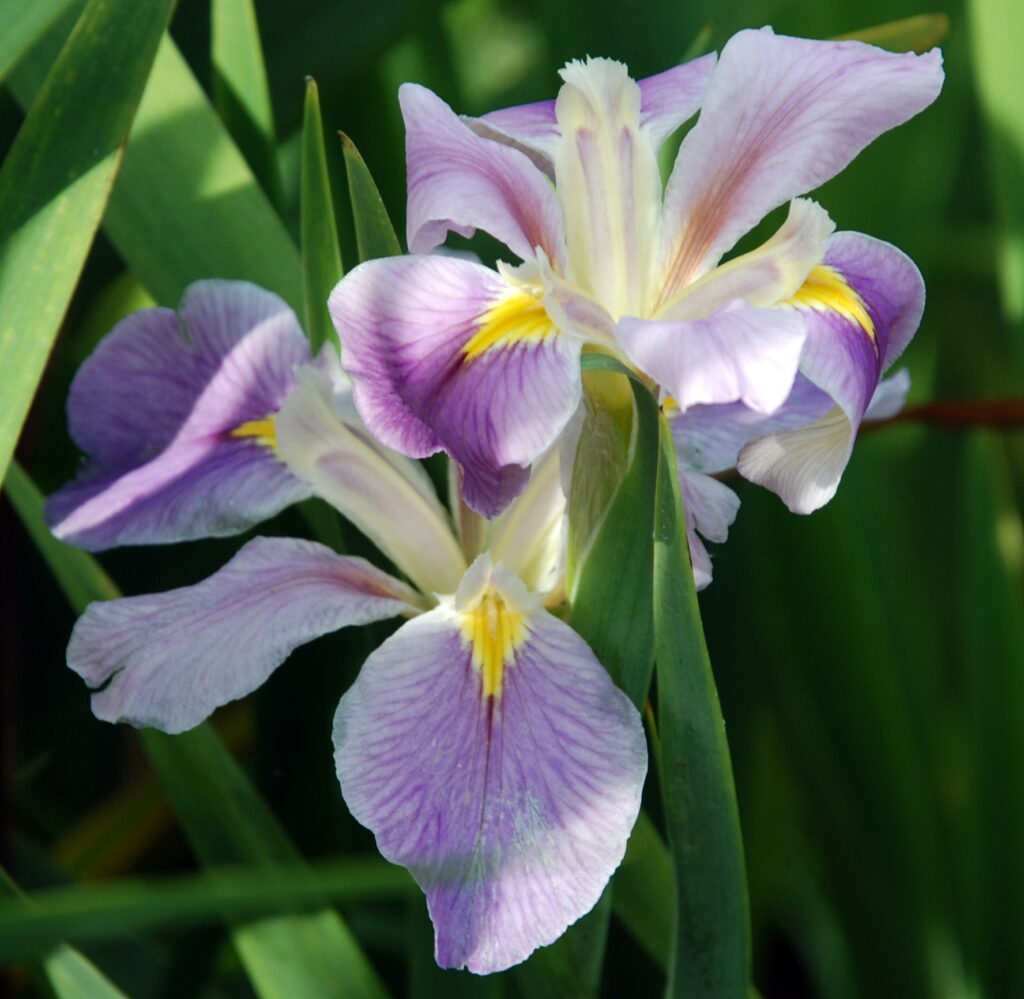
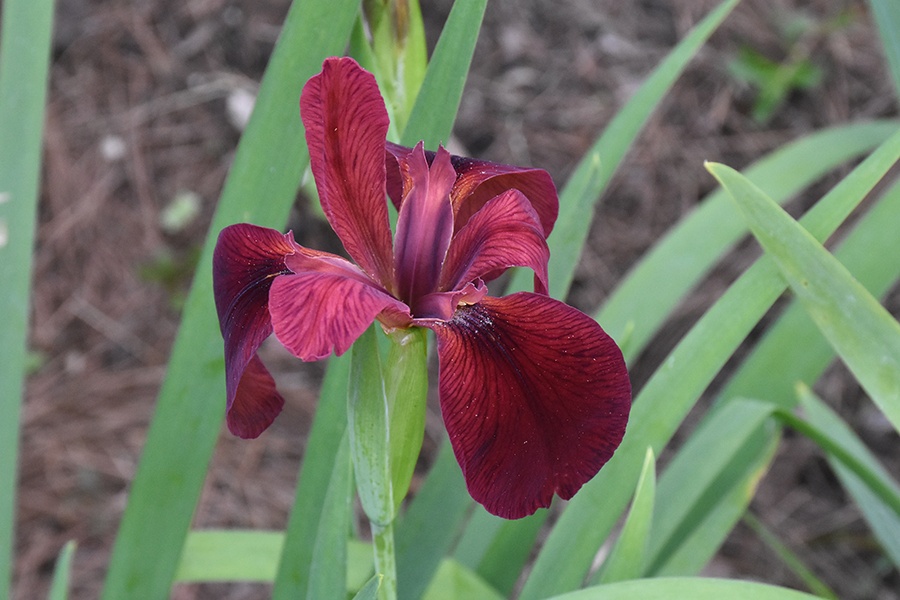
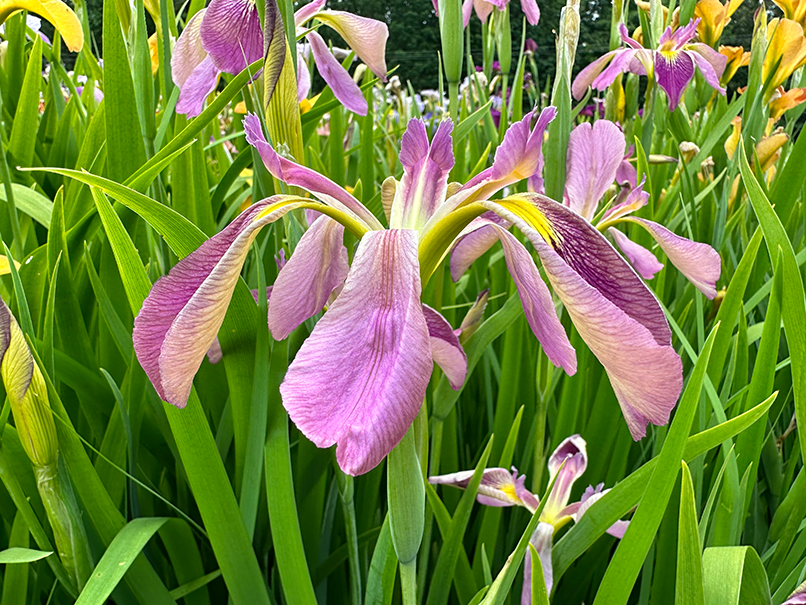
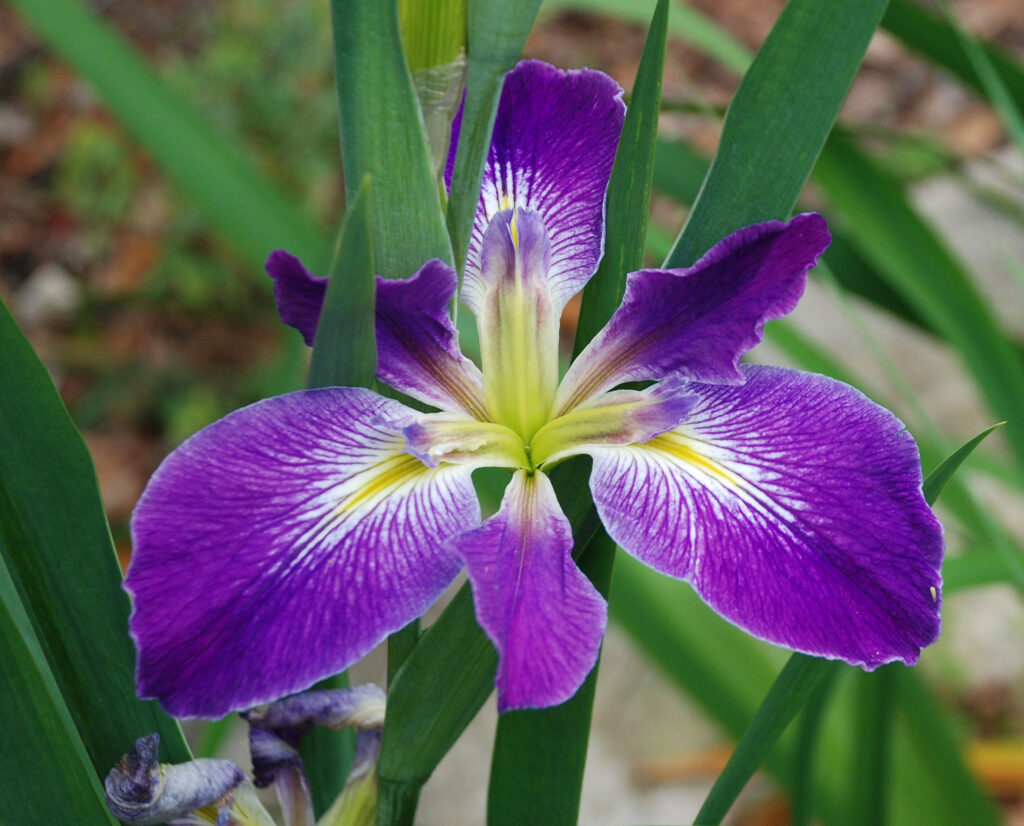
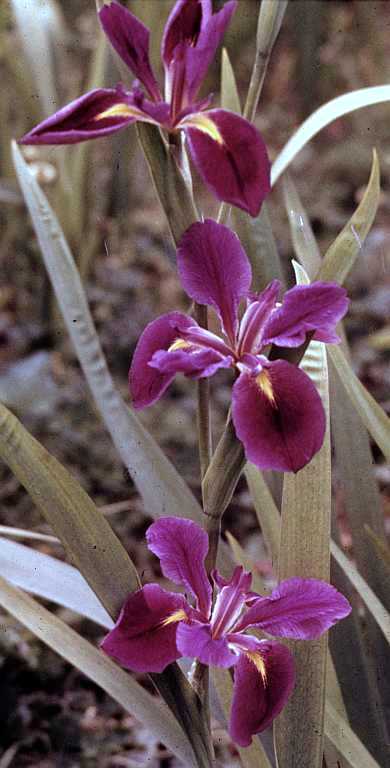
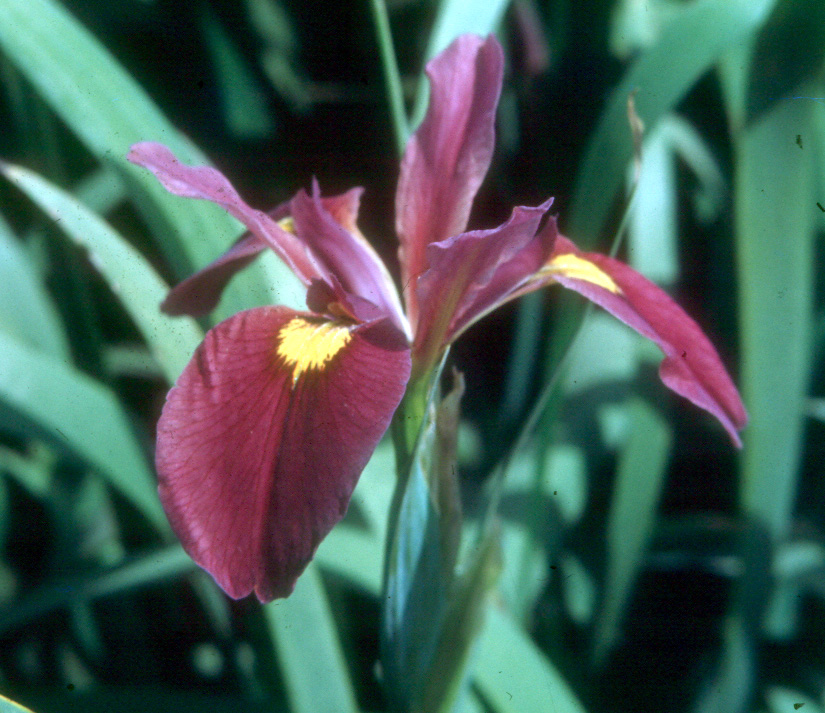
In retrospect, relatively few early cultivars were utilized to create a disproportionate number of later Louisiana irises. Some of these famous foundation irises include.
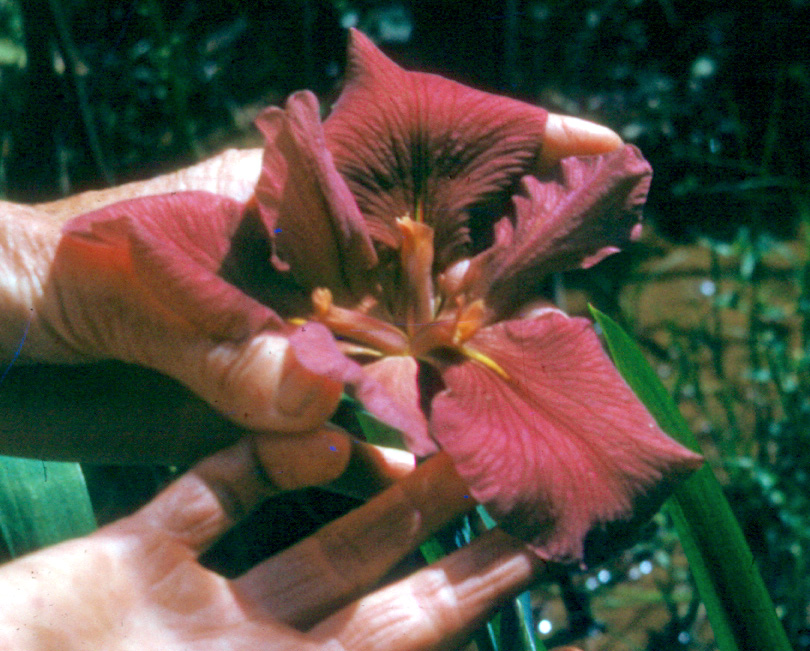
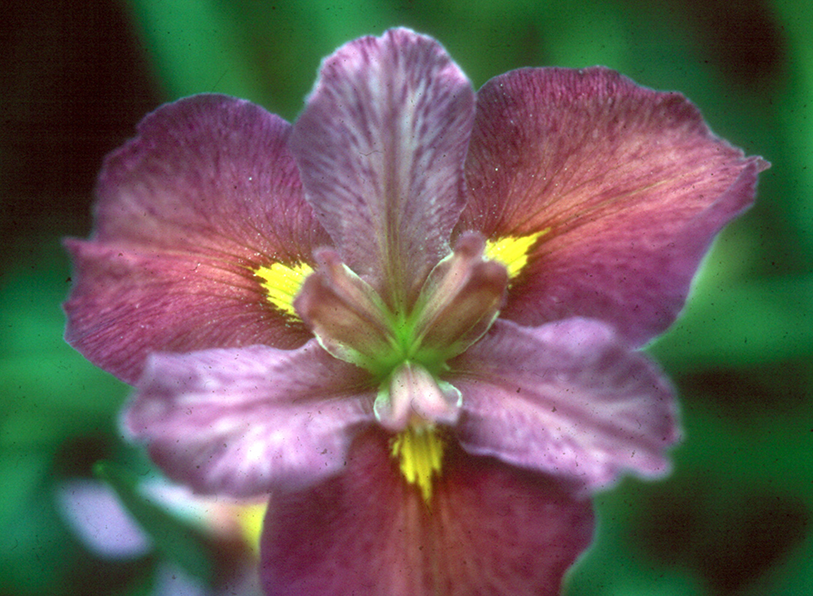
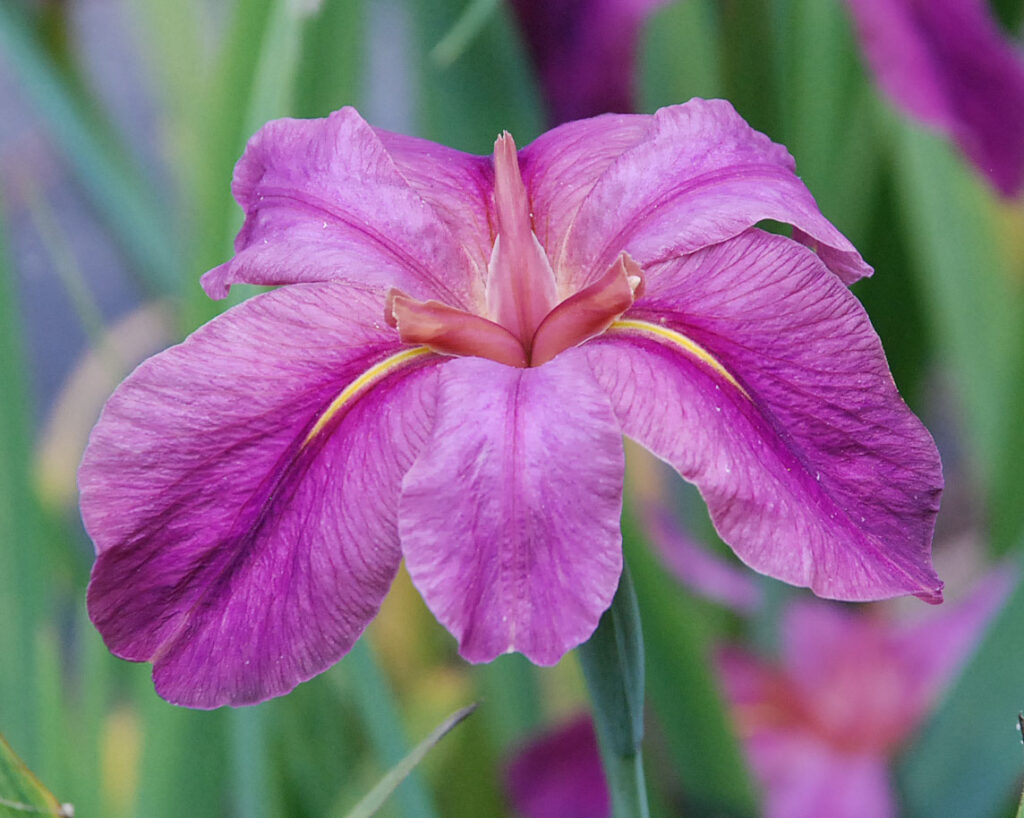
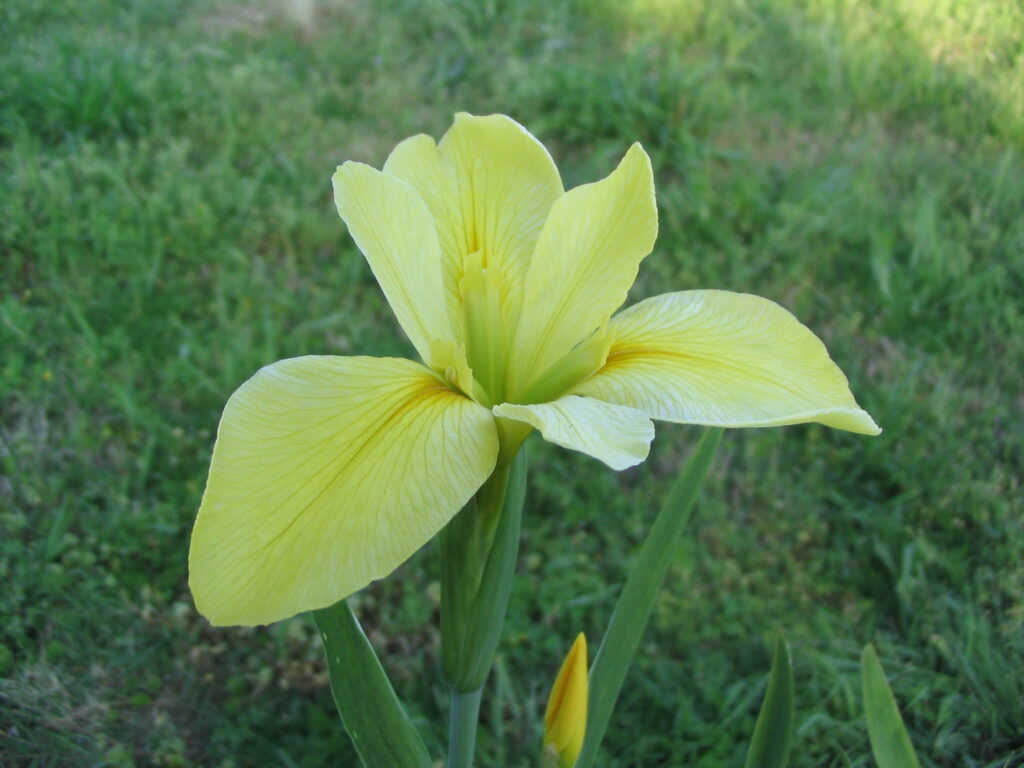
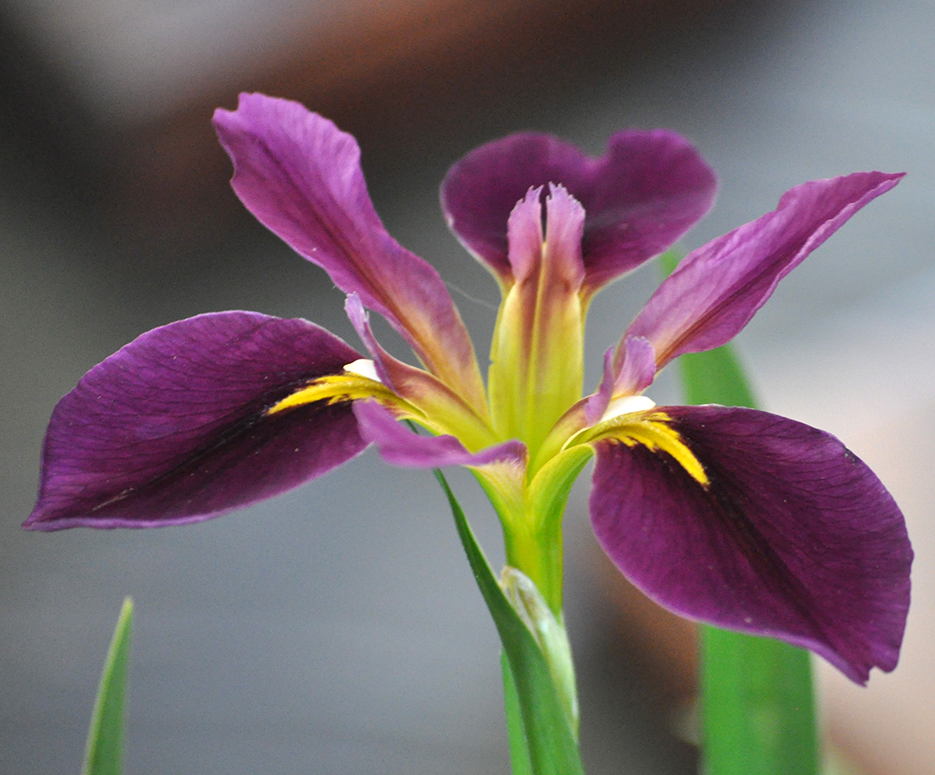
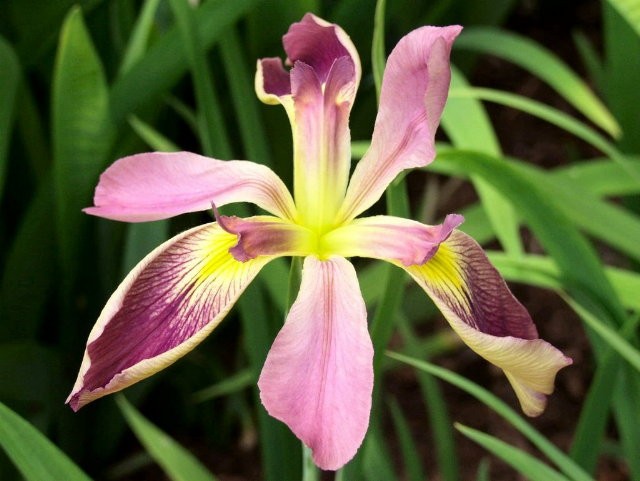

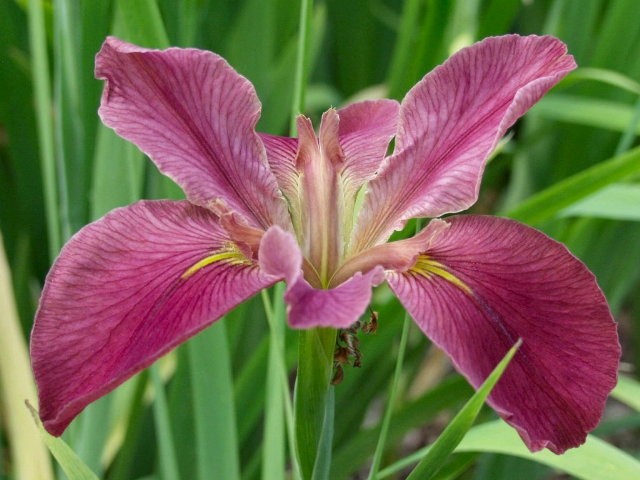
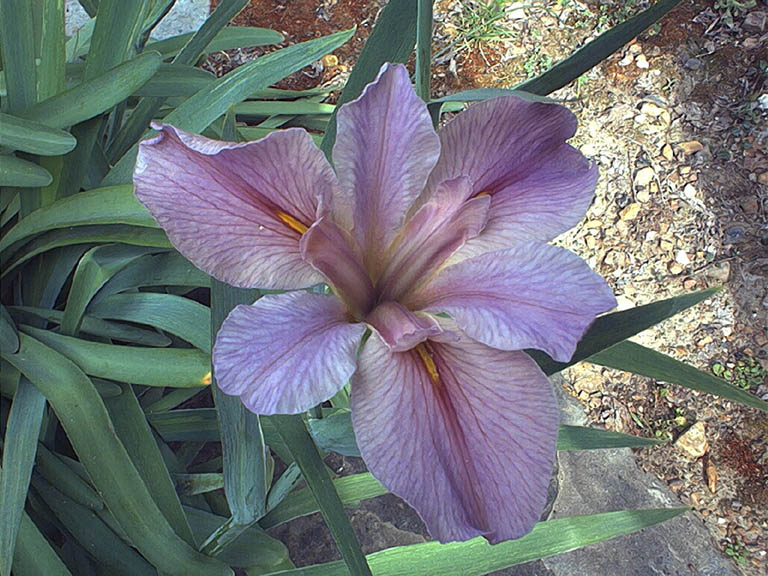
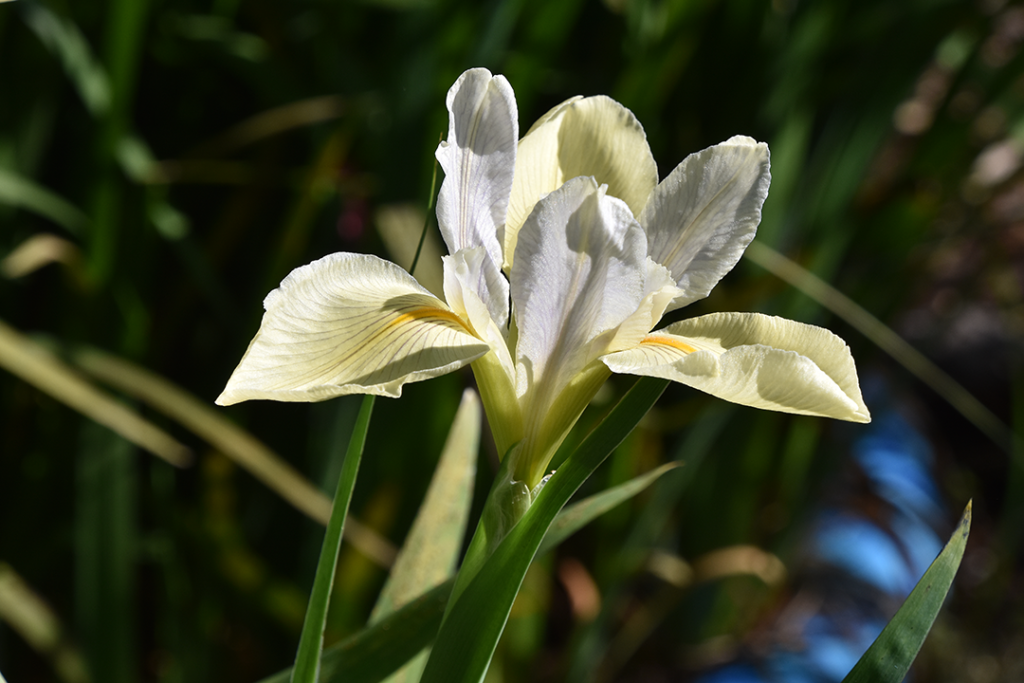
These produced a later generation of hybrids, which have been a bridge to modern cultivars. The cycle is ongoing, and a new list of principal progenitors will emerge for the irises of the future. But for now, we can look back to these irises as among the most important ancestors of today’s Louisiana irises.
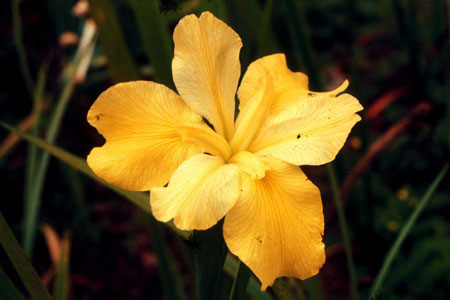
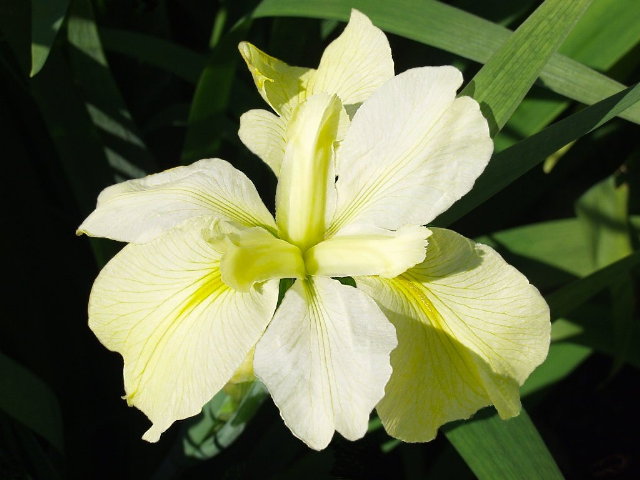
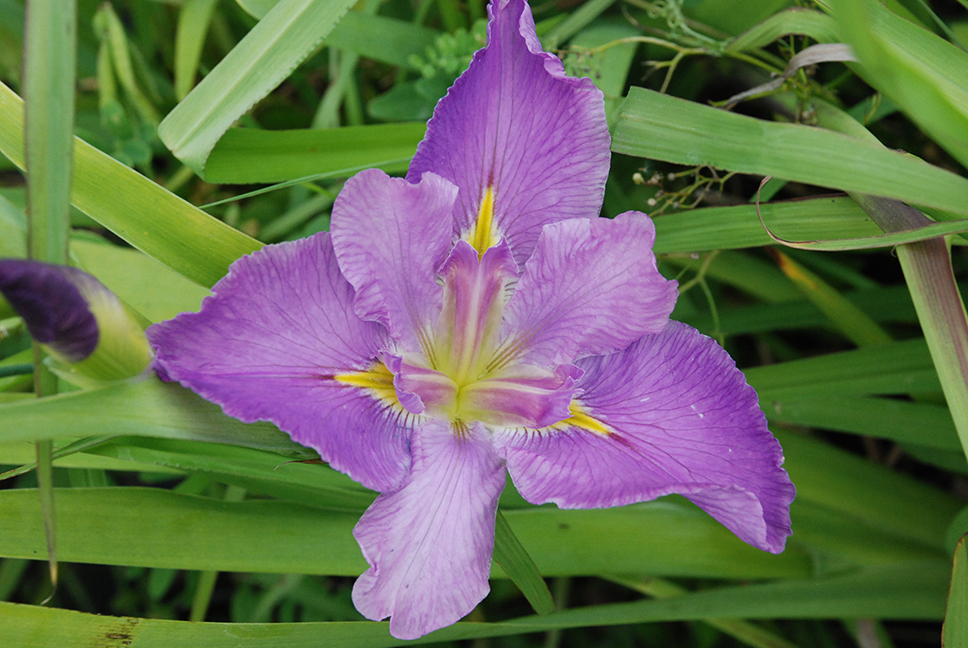
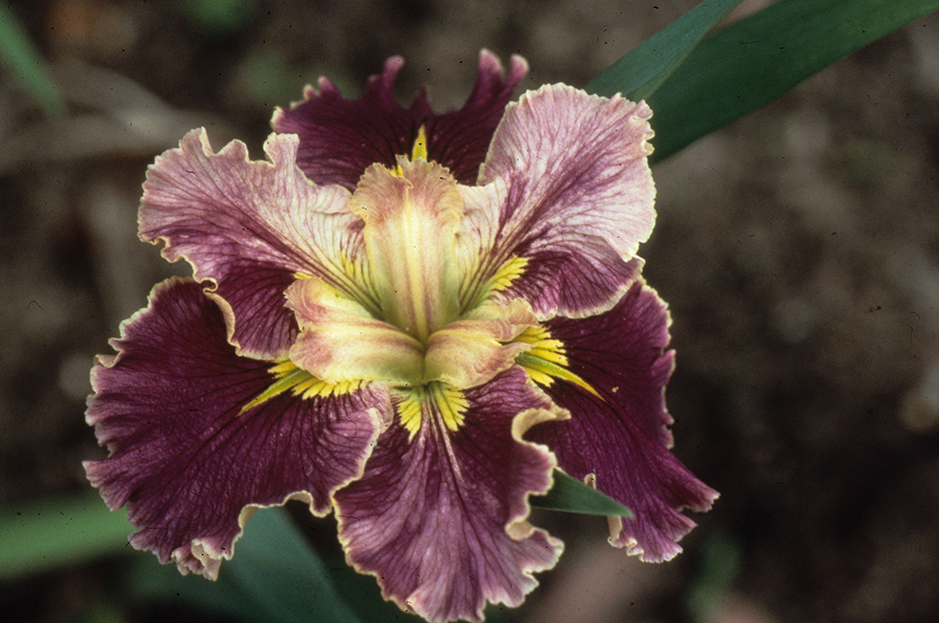
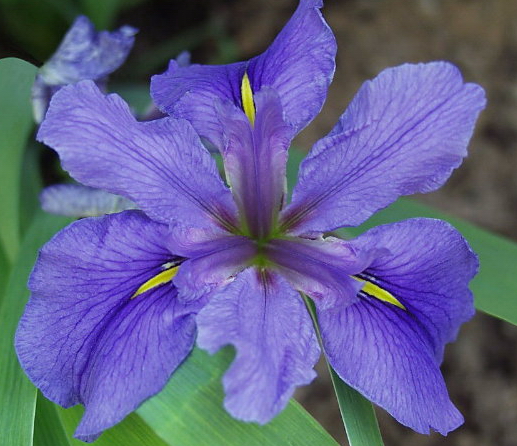
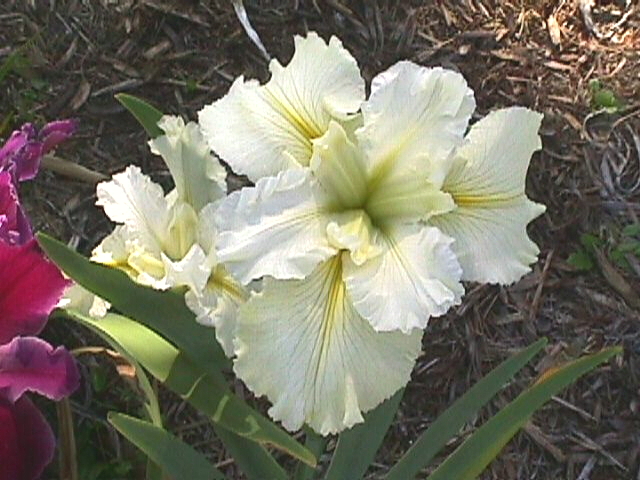
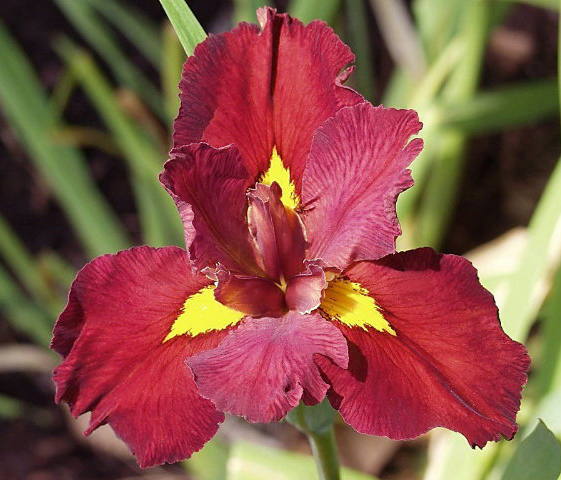
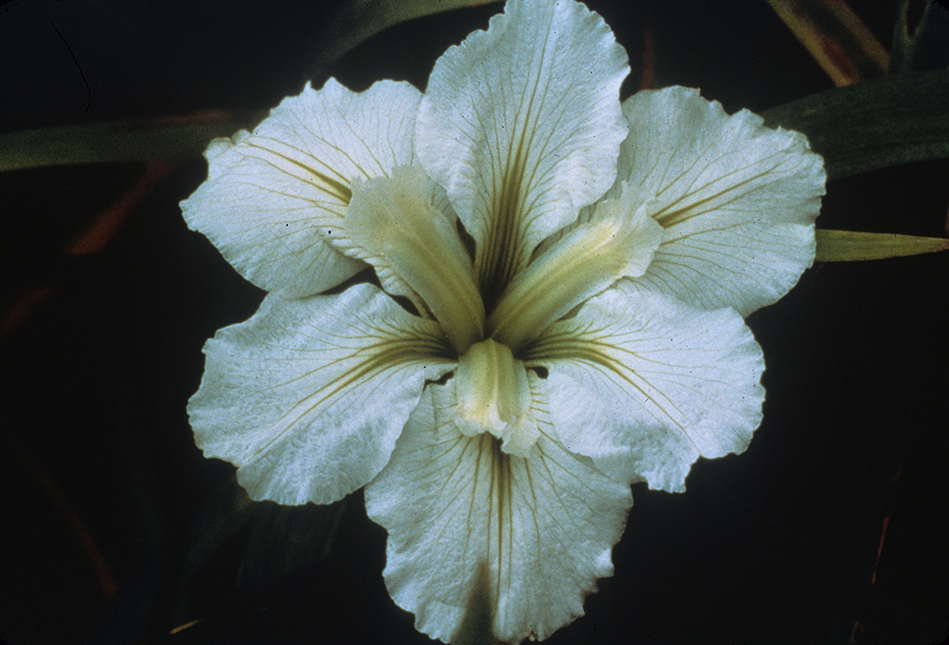
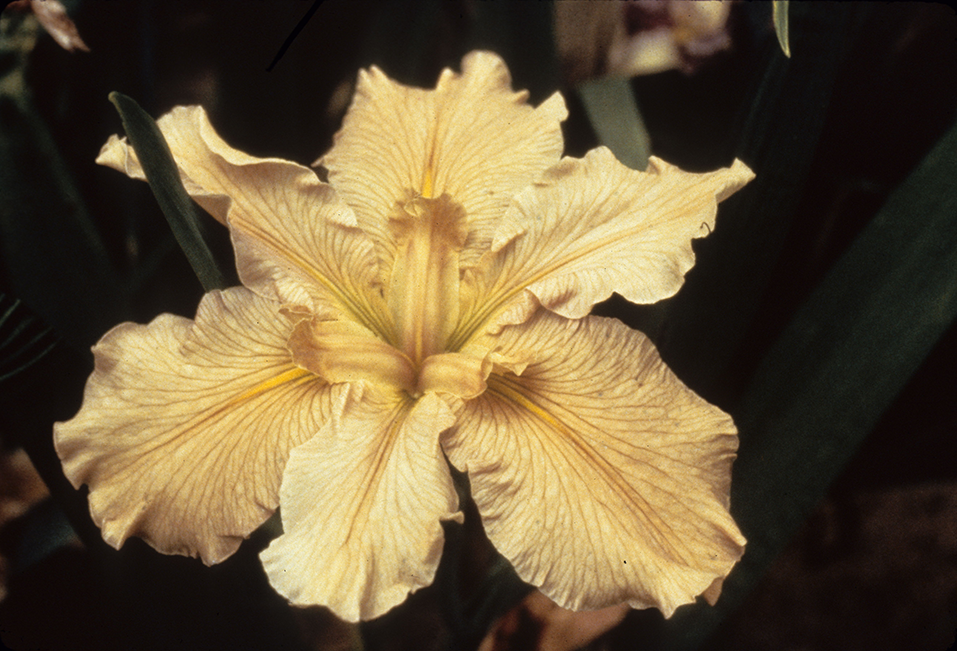
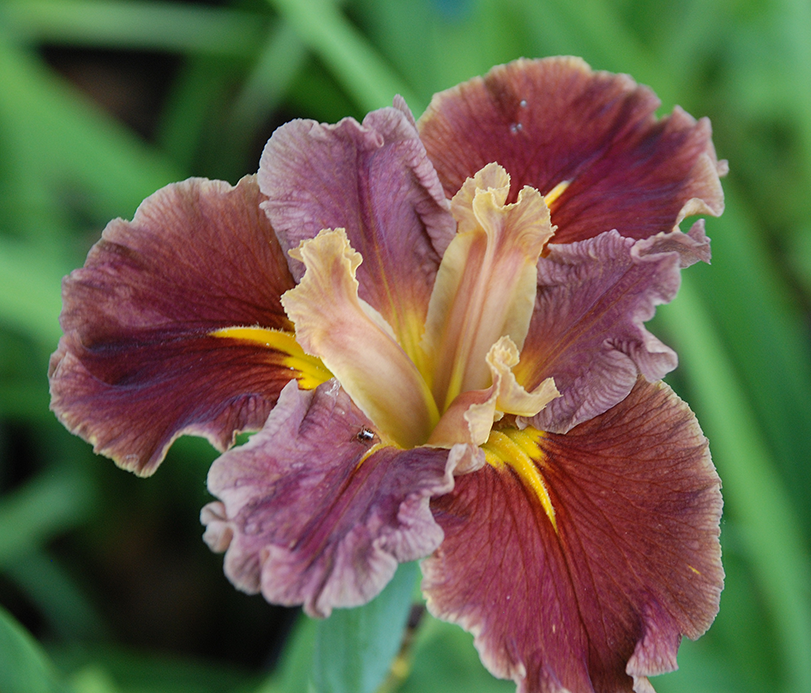
Hybrid ‘Lust For Lime’
Louisiana iris cultivars have evolved in many ways, generally improved as garden plants. Compared to the wild species and early hybrids, today’s Louisiana irises tend to have fuller flowers that last longer thanks to thicker petals. They exhibit a wide range of colors and forms, which is unsurprising since the wild irises are highly varied even within the species groupings. However, the combination of genes across different species has triggered changes in hybrids that would be hard to imagine from looking at the species themselves. Each succeeding year seems to bring surprises as new Louisiana iris cultivars are registered and introduced into commerce. It is even harder to imagine where Louisiana irises will be in another fifty years.
Hybridizers used all four species native to Louisiana, which found their way into the backgrounds of today’s irises. While it is helpful to be aware of the attributes that each species brings to the hybrids, it becomes increasingly complex to map out the background of cultivars as succeeding generations accumulate. Although there are several resources available [link to Resources section re the Checklist, Iris Encyclopedia, and AIS Iris Registry] to research the ancestry of the irises, it is of more interest to most hybridizers today to study an iris’s contemporary attributes in deciding whether to use it in their work.
Several attributes are worth considering by both the hybridizer and the grower looking for good garden garden plants or show irises.
Louisiana iris cultivars have evolved in many ways, generally improved as garden plants. Compared to the wild species and early hybrids, today’s Louisiana irises tend to have fuller flowers that last longer thanks to thicker petals. They exhibit a wide range of colors and forms, which is unsurprising since the wild irises are highly varied even within the species groupings. However, the combination of genes across different species has triggered changes in hybrids that would be hard to imagine from looking at the species themselves. Each succeeding year seems to bring surprises as new Louisiana iris cultivars are registered and introduced into commerce. It is even harder to imagine where Louisiana irises will be in another fifty years.
Hybridizers used all four species native to Louisiana, which found their way into the backgrounds of today’s irises. While it is helpful to be aware of the attributes that each species brings to the hybrids, it becomes increasingly complex to map out the background of cultivars as succeeding generations accumulate. Although there are several resources available [link to Resources section re the Checklist, Iris Encyclopedia, and AIS Iris Registry] to research the ancestry of the irises, it is of more interest to most hybridizers today to study an iris’s contemporary attributes in deciding whether to use it in their work.
Several attributes are worth considering by both the hybridizer and the grower looking for good garden garden plants or show irises.
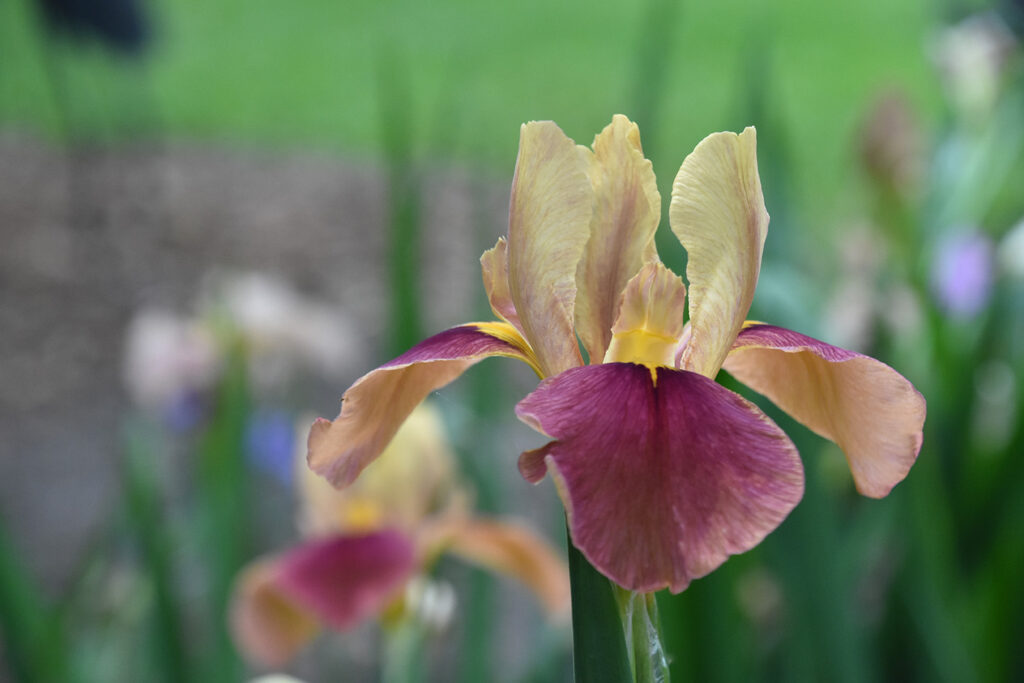
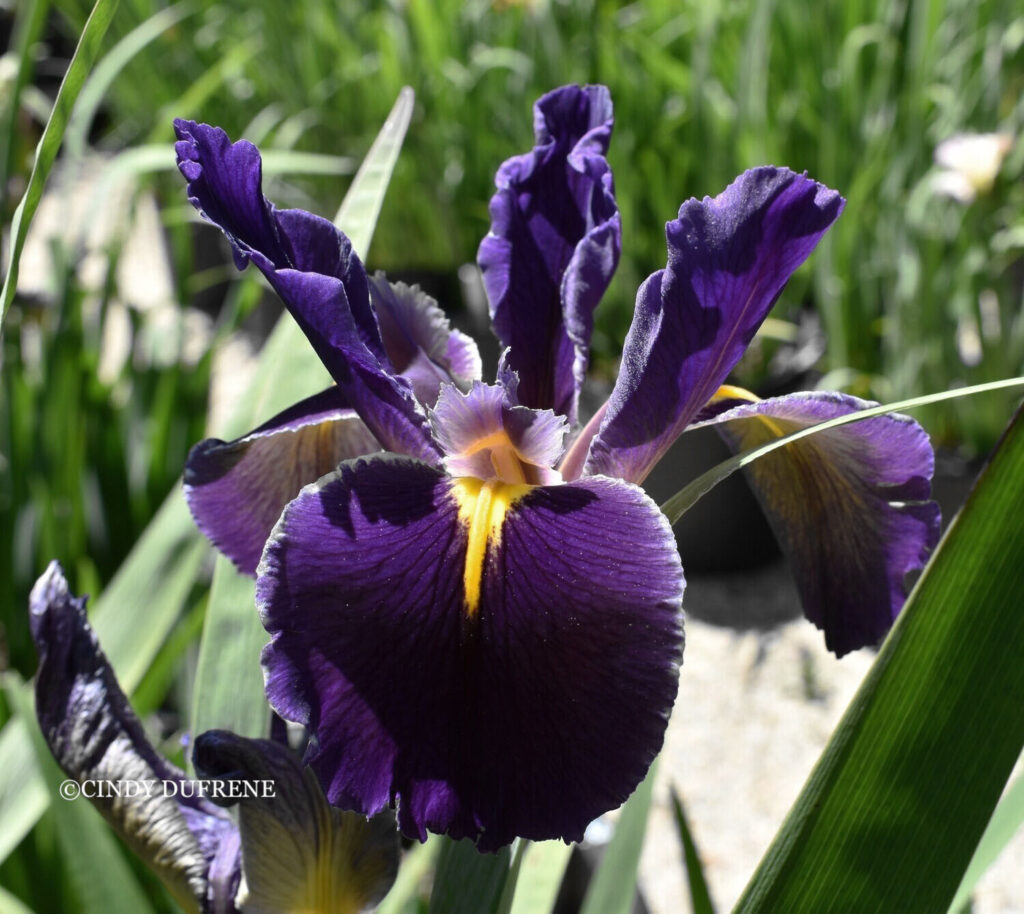
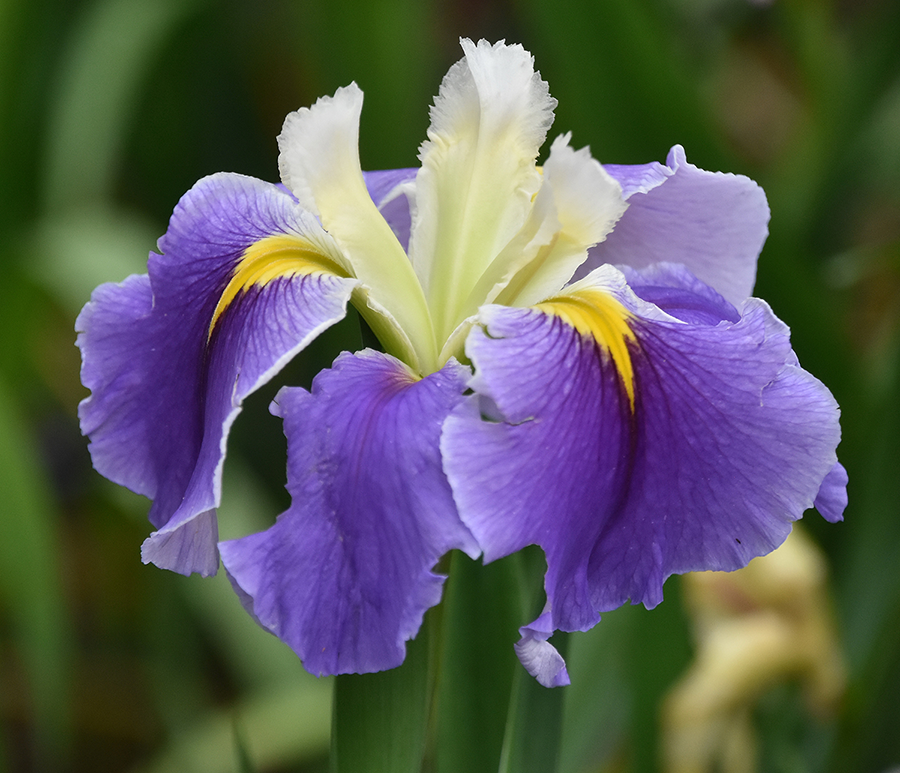
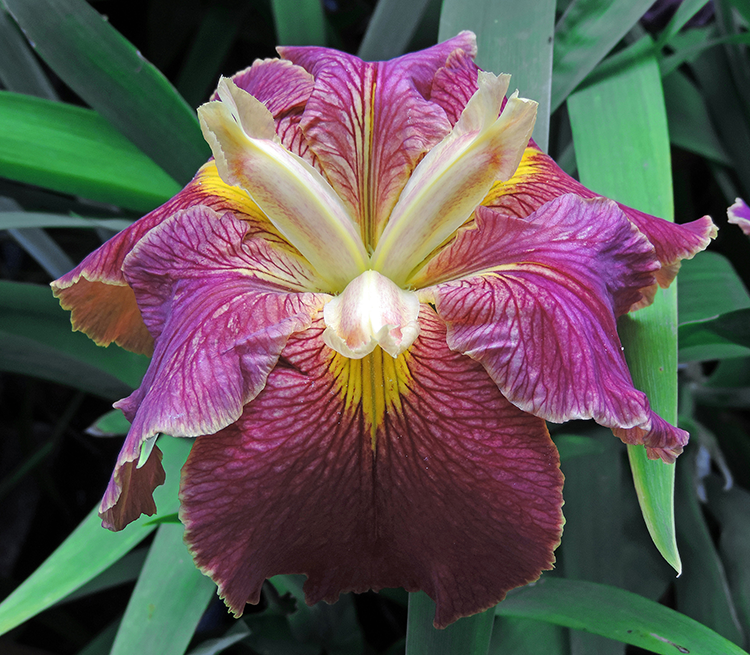
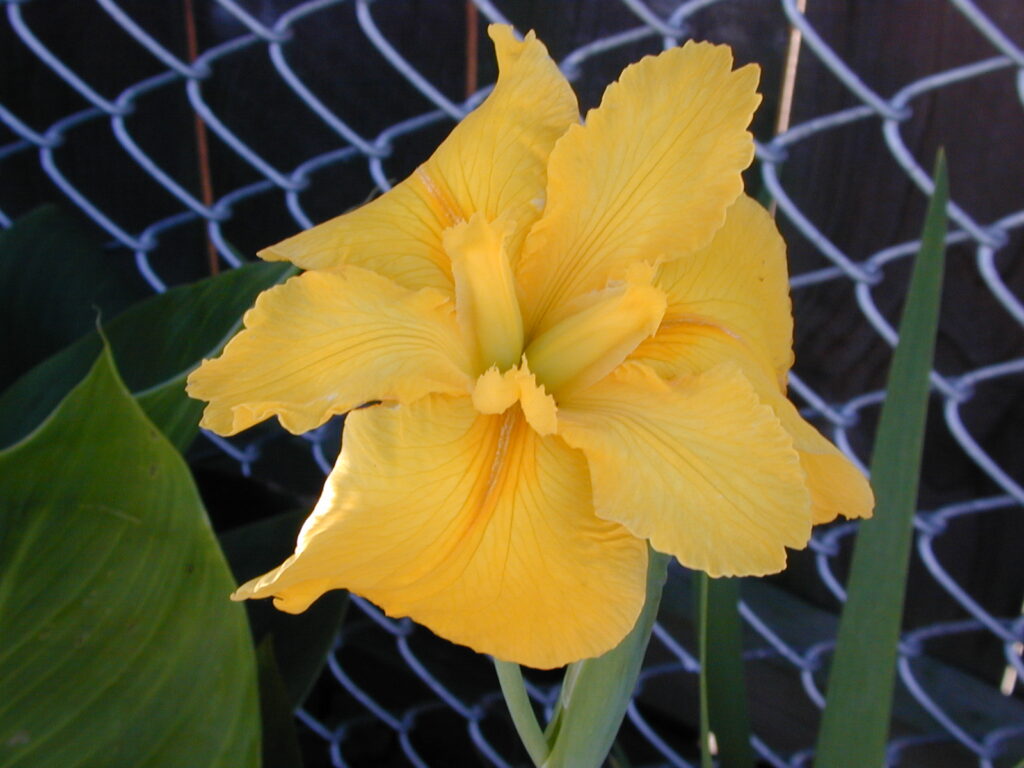
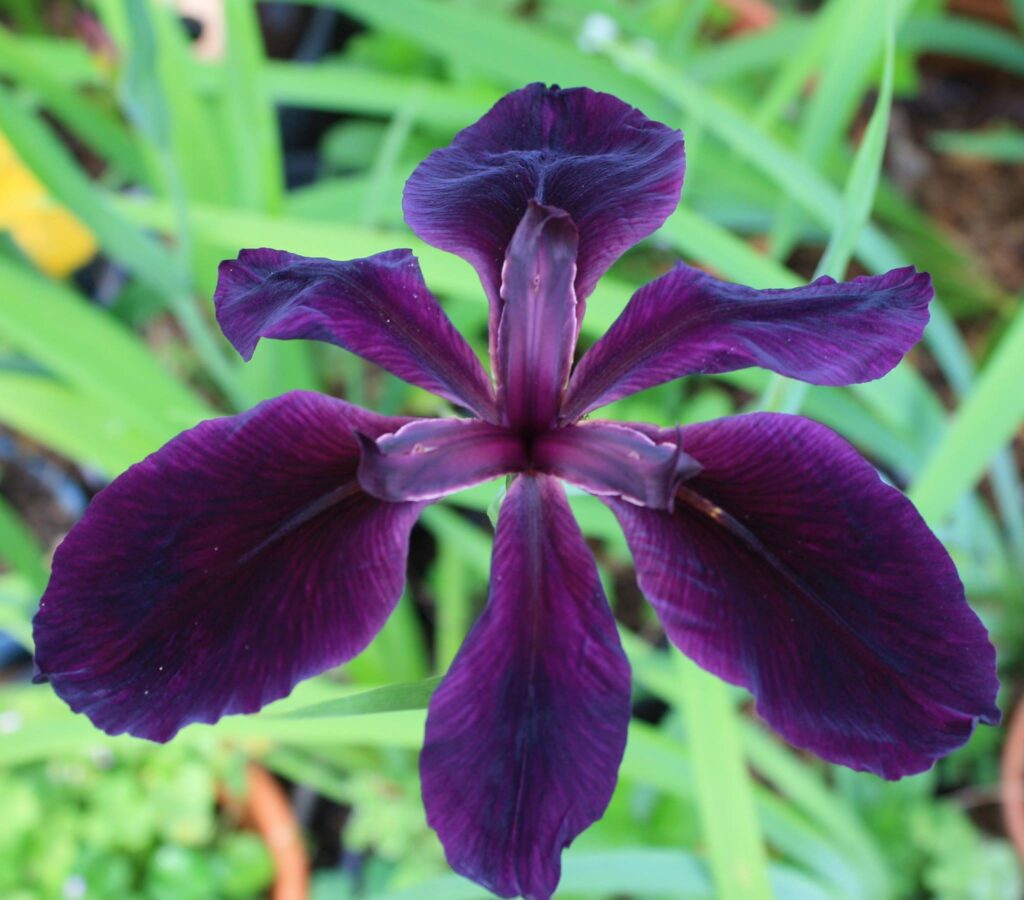

The appeal of flowers largely depends on their presentation, and the bloom stalk determines whether there are relatively more or fewer blooms to enjoy and how they are deployed. A stalk may have three to six blooming positions, and there may be one or two flowers at each position (always at least two in the top or terminal position). More flowers are always better, provided they are attractively displayed.
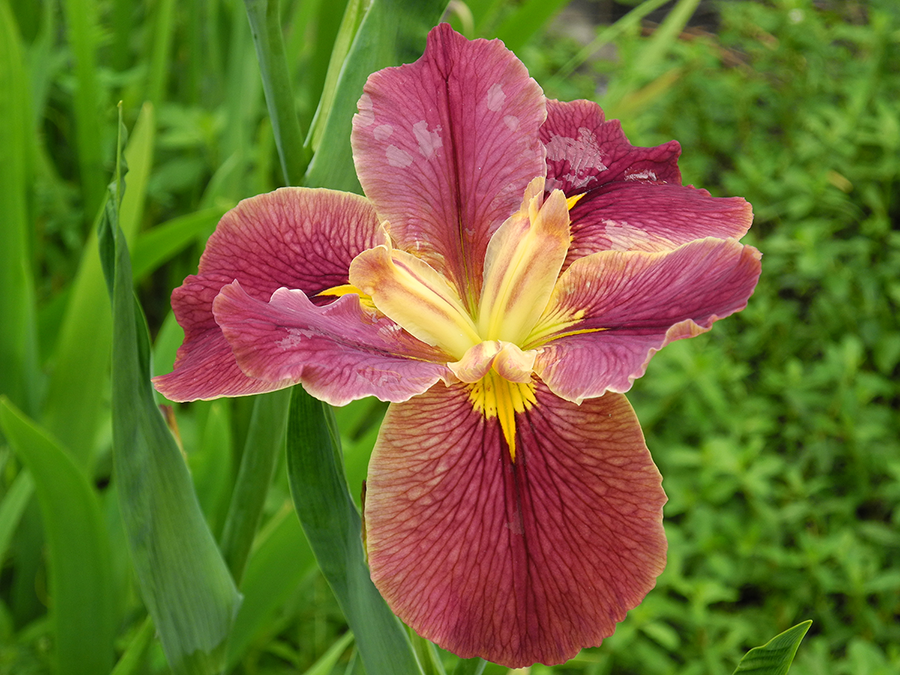
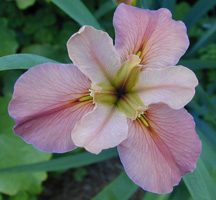
A grower may want to select a range of irises with a bloom period that spans the season. Depending on the weather, one cultivar might stay in bloom for two weeks, but a careful selection can nearly double that garden-wide. Irises derived from I. brevicaulis tend to bloom late, and those with a giganticaerulea or fulva background may be early.
Beyond the plants’ gross characteristics, the iris flower’s parts offer almost endless possibilities for beauty and distinctiveness.
The three style arms of an iris flower house its reproductive parts, which can be decorative as well as rather useful. The styles can vary in size, shape, and color in ways that add markedly to the distinctiveness of the flower. Styles can be long or short and narrow or wide. The tip can be frilly.
Color variation on the styles can make an iris flower pop out. They can match the dominant color of the standards and falls or be lighter or darker. Near-white styles against a dark background sometimes make an iris stand out, but the opposite can also be true. Styles sometimes are a blend of colors with variation from base to tips. Unusual colors, such as shades of green, are increasingly seen.
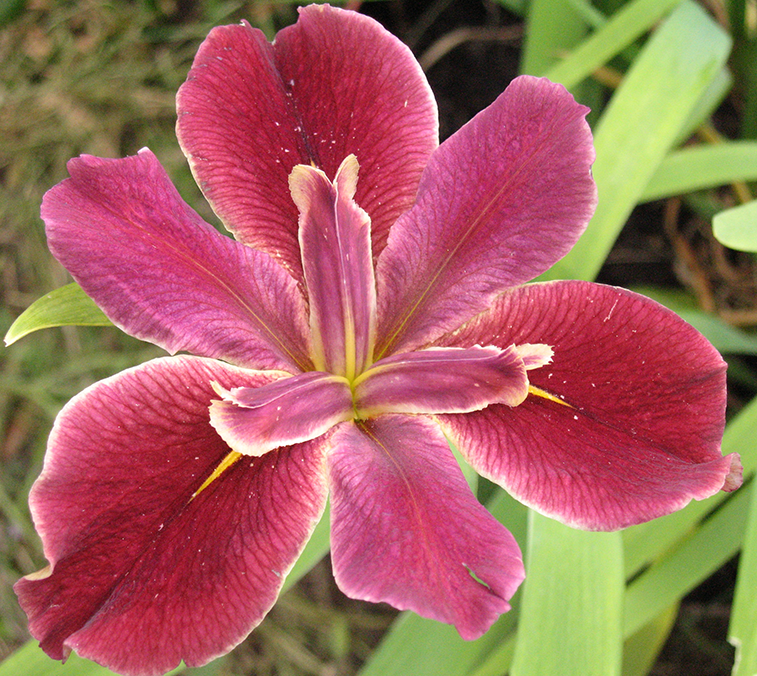
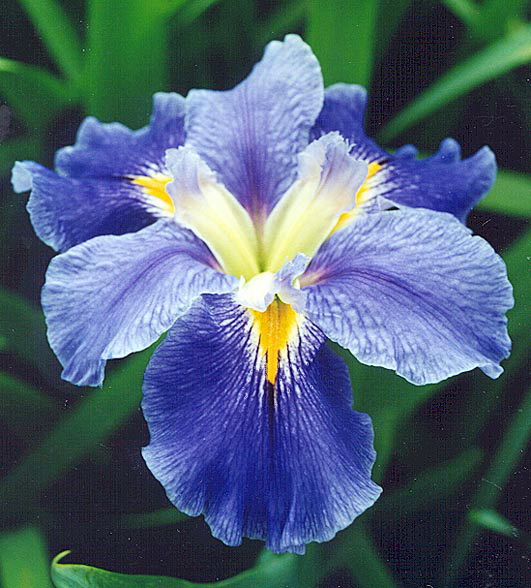
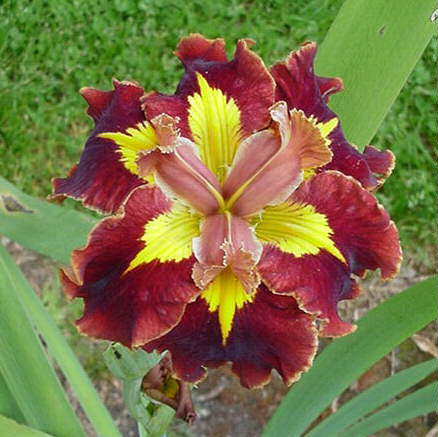
The signals of an iris can be almost nonexistent, or they can be large, showy blotches of a contrasting color. They can take on other configurations that challenge brief descriptions. Signals often are a ready means to identify an iris, and they can assure its distinction.
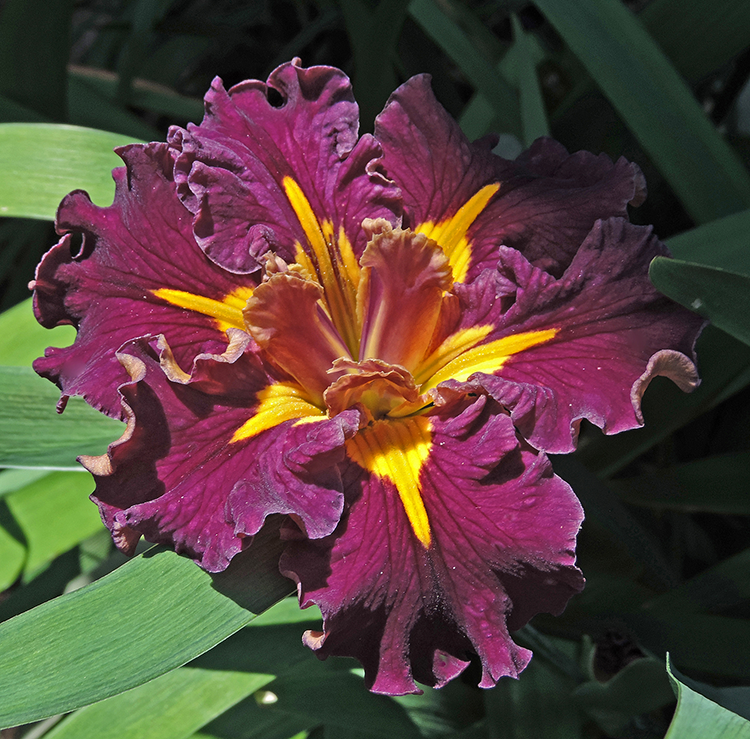
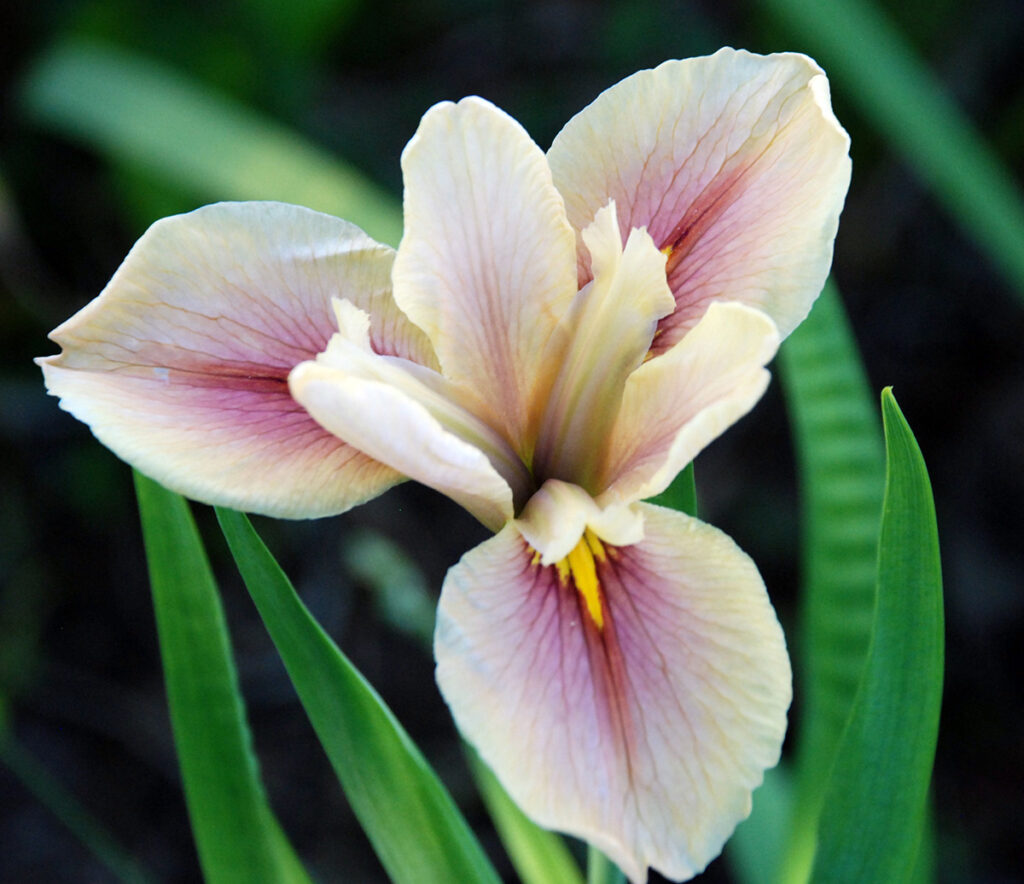
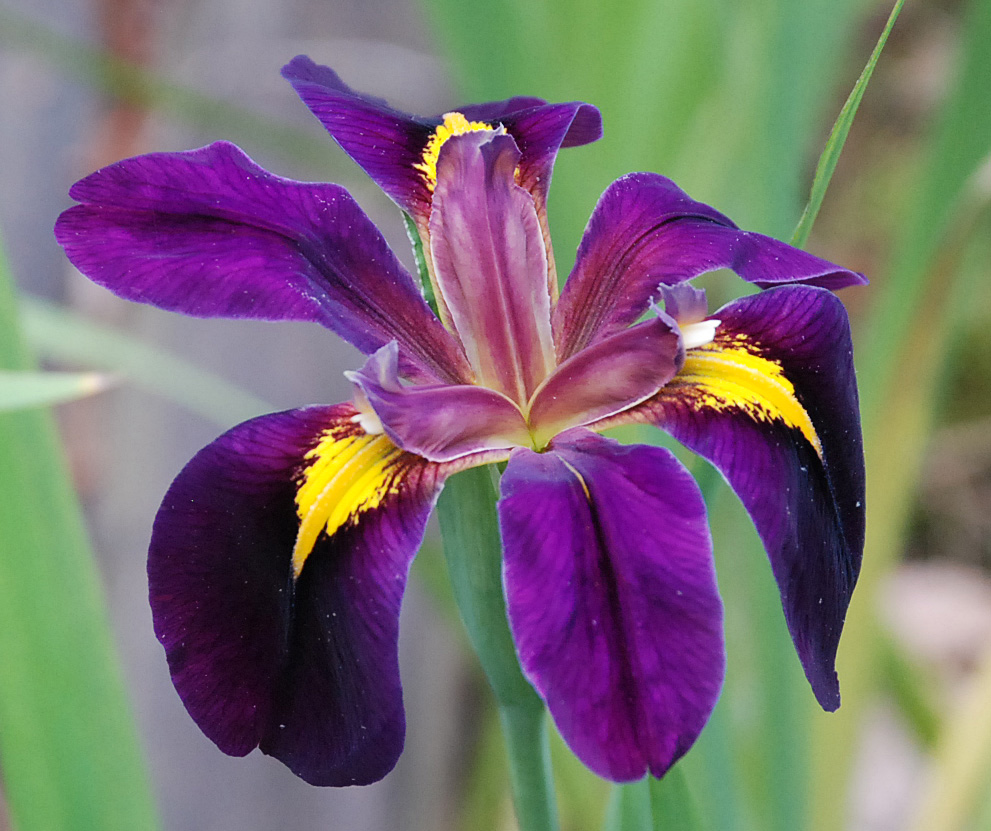
The base color of an iris’s standards and falls can encompass virtually a full spectrum in Louisiana irises, which boast the widest natural color range of all the iris groups. Color is the primary defining attribute of an iris flower, but other features can mediate or determine its visual impact. These include the extent of veining, ruffling or fluting, or a crepey texture. In addition, flower parts can exhibit distinct edging, usually in a lighter color or wider bands of lighter or darker colors. A few bicolors also exist but are not plentiful among Louisianas.

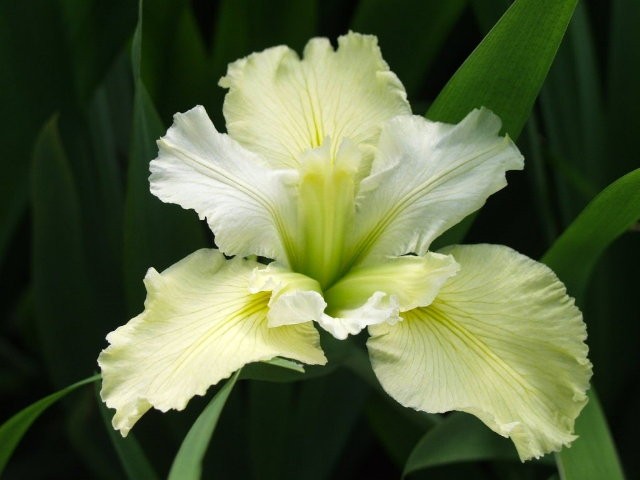
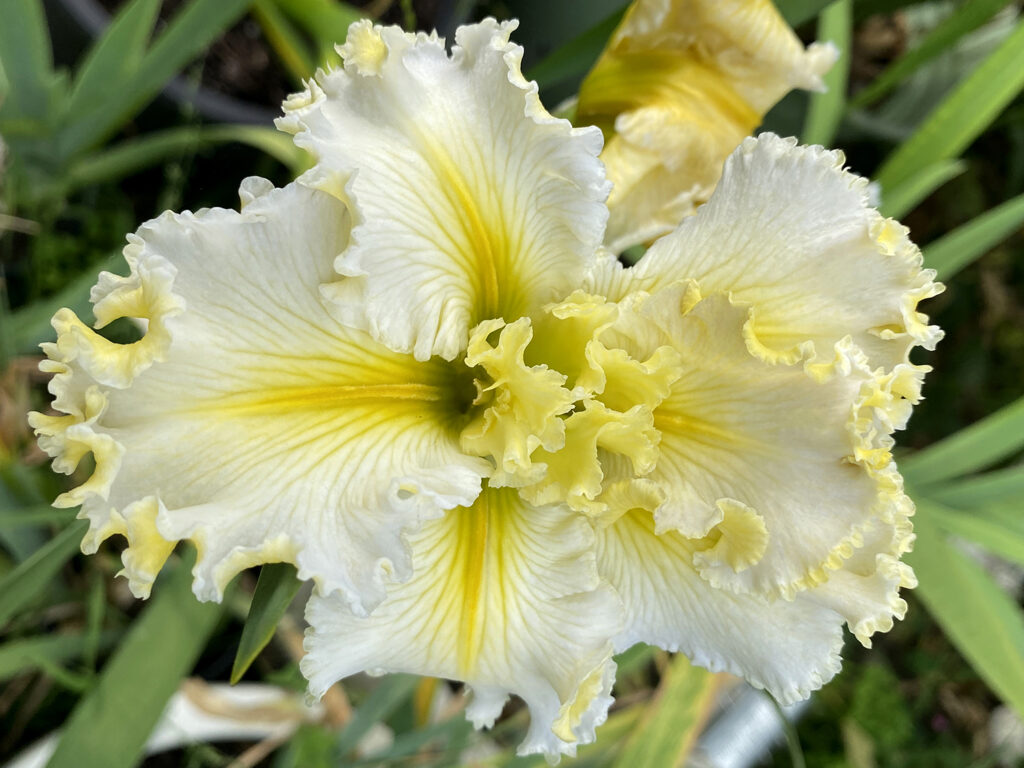
All is not perfect among the modern Louisiana irises. New growers are often afflicted with “Pretty Flower Syndrome,” a tendency to be so taken with the beauty of a new or novel flower that there is a failure of the critical eye necessary to balance the many important qualities of a good iris. It is easy to fall in love with the first open blossom and decide quickly that the plant is a must-have. But a more considered and balanced assessment might lead to a different conclusion about which irises you wish to bring into your garden. A few factors to consider:
All is not perfect among the modern Louisiana irises. New growers are often afflicted with “Pretty Flower Syndrome,” a tendency to be so taken with the beauty of a new or novel flower that there is a failure of the critical eye necessary to balance the many important qualities of a good iris. It is easy to fall in love with the first open blossom and decide quickly that the plant is a must-have. But a more considered and balanced assessment might lead to a different conclusion about which irises you wish to bring into your garden. A few factors to consider:
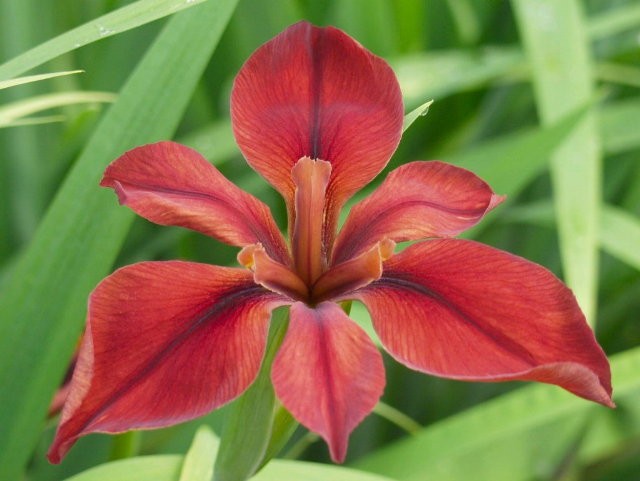
Do the flowers down the stalk open cleanly, or do they get jammed up and fail to open fully because there is too little space between the stalk and the leaf sheath holding the bud? The species and most hybrids do not have this problem, but some cultivars do.
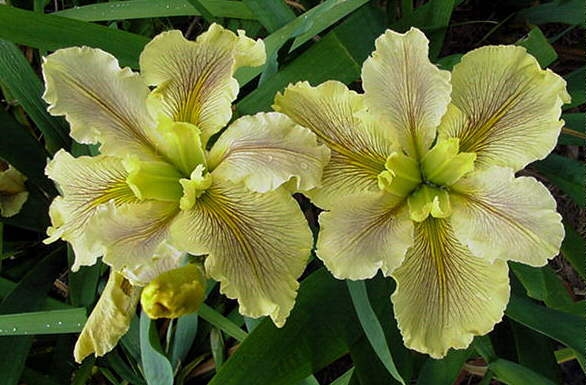
How many buds does a stalk have? Six is considered a minimum, but superior plants often have more, resulting in a more extended bloom season. Irises can have up to five or even six blooming positions on a stalk and sometimes two buds at a position. So, how does a particular iris compare with a high standard of floriferousness?
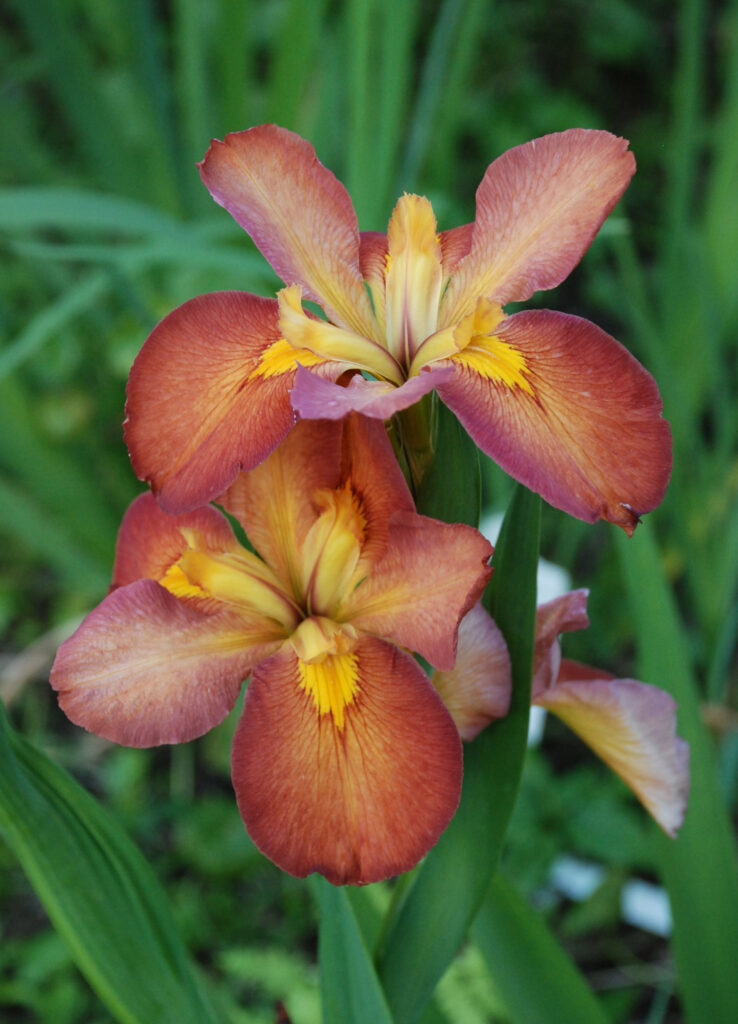
Is the plant vigorous, and does it multiply well? A single rhizome should produce two offsets in a year, and superior ones can make four, six, or more, resulting in a nice clump over several years. If an iris does not grow robustly, it will not produce many bloom talks and will be disappointing in the garden.
© 2024 Society for Louisiana Irises. All rights reserved.